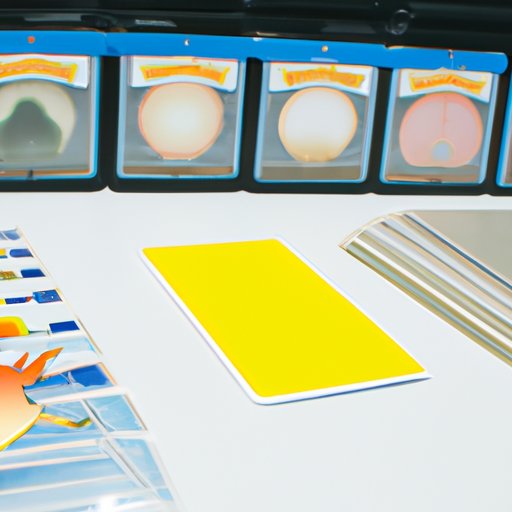Introduction
If you’re a fan of the Pokemon Trading Card Game, you probably know how exciting it can be to add rare and valuable cards to your collection. But did you know that getting your cards graded can help you determine their true value and protect them from damage? In this article, we’ll explore the grading process for Pokemon cards and provide a step-by-step guide to getting your own cards graded.
A Beginner’s Guide to Getting Your Pokemon Cards Graded
One of the first things you’ll want to consider when getting your Pokemon cards graded is the benefits of grading itself. Grading can provide a clear indication of your card’s value, making it easier for you to sell or trade with confidence. Additionally, graded cards are protected by a plastic case, which helps prevent damage and deterioration over time. But which grading company should you choose? And how do you prepare your cards for submission?
First, you’ll need to research grading companies to find one that meets your needs. Companies like PSA, Beckett, and CGC are all reputable companies that specialize in grading trading cards, including Pokemon cards. When choosing a grading company, be sure to consider factors like turnaround time, customer service, and cost.
Before submitting your cards, make sure they’re in the best possible condition. This means checking for scratches, bends, or other imperfections that could affect their grade. You’ll also want to make sure that your cards are properly sleeved and stored in a protective case or cardboard holder. Finally, pack your cards securely and choose a shipping method that provides tracking and insurance.
Top 5 Things to Know Before Submitting Your Pokemon Cards for Grading
When it comes to getting your Pokemon cards graded, there are a few key factors to keep in mind. First, card rarity and condition are the two most important factors in determining a card’s value. Cards that are rare and in excellent condition will command a higher price than cards that are more common or show signs of wear and tear. Additionally, cleaning and preserving your cards can help maintain their condition and value over time.
When submitting your cards for grading, be sure to avoid common mistakes like submitting altered cards or failing to include the proper paperwork. And once you’ve submitted your cards, be sure to track your submission carefully to ensure that everything goes smoothly.
Expert Tips for Maximizing Your Pokemon Card Grading Score
Once you’ve submitted your cards for grading, it’s important to understand how the grading process works. Each card is assigned a grade based on factors like centering, corners, edges, and surface condition. These grades range from 1 (Poor) to 10 (Gem Mint), with 10 being the highest possible grade.
To maximize your card’s grade, take the time to identify any minor flaws and make improvements where possible. Small issues like off-center printing or minor scratches can all affect a card’s grade, so paying close attention to detail can make a big difference. Additionally, consider investing in services like pre-grading or re-grading to help identify areas for improvement.
Breaking Down the Cost of Getting Your Pokemon Cards Graded
One of the biggest considerations when getting your Pokemon cards graded is the cost involved. Grading fees can vary widely depending on the company and the service level you choose. However, most companies offer tiered pricing based on the number of cards you submit, with discounts available for larger batches. Additional fees may also apply for services like expedited grading or special designations.
When budgeting for grading fees, be sure to factor in the potential return on investment. While grading can significantly increase the value of your cards, it may not be worth the cost for all cards or collections. Consider the rarity and condition of your cards, as well as your long-term goals for your collection, to determine whether grading is the right choice for you.
The Pros and Cons of Getting Your Pokemon Cards Graded
While getting your Pokemon cards graded can offer numerous benefits, there are also some risks and drawbacks to consider. Firstly, there is a chance that your cards could be damaged during the grading process, which could significantly reduce their value. Additionally, the cost of grading can be prohibitive for some collectors.
However, the benefits of grading far outweigh the potential risks for many collectors. Graded cards are generally more valuable on the resale market, and can help collectors protect their investment for years to come.
Conclusion
Overall, getting your Pokemon cards graded is an important step for serious collectors who want to understand the true value of their cards. By following the steps outlined in this guide, you can ensure that your cards are submitted safely and securely, and that you receive a grade that accurately reflects their rarity and condition. Whether you’re building a collection for yourself or looking to sell or trade your cards, grading can help you achieve your goals and make the most of your investment.
